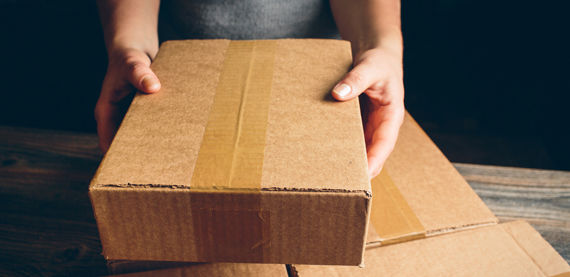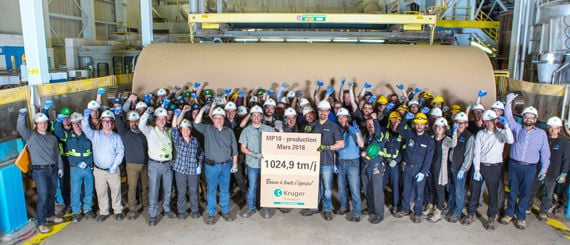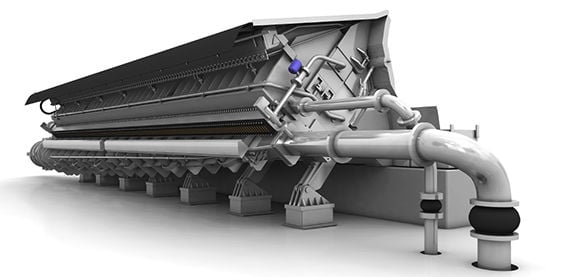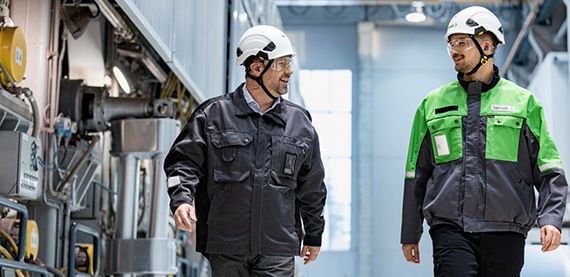Conversion projects open the door to new opportunities
Author: GRAEME RODDEN
As the pulp and paper industry and technology evolve, the world has seen a revolution in communication. Foremost, the rise of the Internet has seen the decline of printed media, thus the lessening demand for graphic paper grades. However, the decline in this sector presents new business opportunities. Rather than permanently idling a paper machine, why not move into a growing market such as packaging?
Paper machine conversions have become an option that many producers are considering. Sakari Karjalainen is Senior Sales Manager, Board & Paper Business, Valmet. He explains some of the factors that could lead a producer to consider a conversion project.
Karjalainen notes that paper machines, no matter what grade they produce, are designed to operate at close to design capacity for maximum operating efficiency. If there is a lack of orders, the machine needs to run at lower speeds or, at worst, be idled periodically. In both cases profitability is impacted negatively.
As noted, the major driver is the declining demand, but there are other issues at work here. The COVID-19 pandemic hit hard as schools and offices closed, further lessening the need for graphic papers.
The Amazon Factor
E-commerce, where growth continues apace, driven by companies like Amazon, is another factor. To be successful, speed is of the essence. The entire logistics process has to be incredibly fast, so people save time by ordering online instead of going out to shop. Karjalainen adds that the goods being shipped need protection, to avoid damage and the cost of the packaging material itself needs to be competitive. “Overall, fiber-based packaging solutions have the ability to solve the whole equation.”

The environmental aspect should not be forgotten. “Instead of dumping waste paper into landfill, why not to make something good out of it? This is also about a new, younger consumer generation that generally has been more aware of these things, and they are absolutely right about this.”
Many of the companies have seen the potential of this relatively low-cost raw material. Karjalainen adds that much of the containerboard produced in North America is 100 percent virgin fiber based. This provides an excellent source of raw material for recycled paper machines.
The social aspect also plays a role. Often, a paper mill is a town’s major source of employment and a closure can be a major blow to a community’s viability.
“Looking from inside the industry,” Karjalainen says, “I see a lot of opportunities to make things better and more efficient in North America.” He adds that the machine base in North America is older compared with the rest of the world.
Valmet has considerable experience and expertise when it comes to conversion projects, Karjalainen notes. Conversions have been a Valmet priority for years with a special focus on product development. “We have achieved great results.”
For example, in 2017, Valmet helped Kruger convert a relatively new (by North American standards) newsprint machine to produce linerboard from a 100% OCC furnish at its mill in Trois-Rivières, QC.

Now, Valmet is in the midst of a conversion project at Cascades’ Bear Island, VA, mill where a newsprint machine will be converted to produce lightweight linerboard and medium grades from a 100% recycled furnish. Startup is slated for late 2022.
A decision not to be taken lightly
It may sound relatively simple: Let's make a new grade. But, how technically demanding is it? What must producers research and do before committing?
Karjalainen discusses how Valmet can help. “As always everything starts with good discussion and setting realistic targets. There needs to be a clear business plan before any project can proceed to the equipment delivery phase.”
These discussions take time so anyone thinking about a PM conversion needs to reserve time for this preplanning and do a proper feasibility study. “This process can easily take a year or more.”
Some of the typical questions to start with are: Where do you want to be in five years? What segment you want to conquer? In terms of product quality/end use, are you targeting highest quadrant or market average? Then, you can discuss the technology best suited to your needs.
Further issues include the availability and type of raw material as well as other assets that could be utilized in making the new product.
Karjalainen notes that most conversions now move from paper to containerboard: linerboard and medium. “Relatively speaking, containerboards are less challenging due to the large market,” he says. This is easier than converting a machine to a cartonboard grade, which is used for premium packaging with high quality printing, such as perfume boxes.
The technology chosen for any conversion project should always be based on customer targets. Valmet’s philosophy is to use the best available technology to achieve the best end quality while optimizing material and energy consumption. He says that Valmet has the technology that can bring a competitive edge to its customers, securing performance for the long-term.

Valmet realizes that not all customers are same and there is no “One size fits all” solution. Karjalainen explains that some producers are already experienced with the product they are converting to, but recently, many totally graphic paper makers have decided to go into the packaging business. “It’s clear that risks are higher for them, so anyone partnering with them should have the experience.
“No matter how experienced our customers are with the new grade, we are here to help. We have these discussions practically every week with our customers in North America. Our knowledge is based on our internal expert network and global reference database. And if there are concerns or big questions unsolved, we can always run pilot trials series with our machines in Finland, which can be configured to virtually any machine configuration.”
Bigger is better
Is any graphic paper machine suitable for a conversion? Or, does it need to be a certain size, age, configuration?
Generally speaking, any machine can be converted. However, some machines are more suitable for conversion than others. As a rule of thumb, 300-in.-wide paper machines makes good containerboard machines whereas mid-size machines, 200-in. or so, may be better suited to produce more specialized grades. But, producers must be aware that specialty grades are often more demanding and the market is not as large. Karjalainen says this may not be an easy path to follow for many.
When talking about a typical containerboard conversion, trim width is important. It should be two to three times a typical corrugating roll width. Many modern newsprint machines fit the bill nicely as they are typically about 300 inches wide and a corrugating roll is usually 90 to 100 inches. So, bigger is better.
Karjalainen says that, “This is the part I’m personally less worried about; a paper machine itself can always be rebuilt to a new configuration. Sometimes, real estate can cause some issues if a machine needs to be extended. But then again, we have solutions which can help to overcome this kind of obstacle. There is a sweet spot for every machine and our experts will help to find it.”
He adds that often the location of the mill and the type of furnish are more important issues. For example, trying to convert a graphic paper machine using virgin fiber to a containerboard machine using a recycled furnish can be difficult if the mill is in a rural location far from any readily available source of secondary fiber.
Besides the paper machine itself, producers also need to consider if work needs to be elsewhere in the mill such as pulping plant including bleaching as well as the load to effluent treatment. However, Karjalainen says these are not usually major sticking points. “I usually think about the end product and work backwards.”
The work depends on the requirements of new grade. It varies in every project. Sometimes it means that kraft pulping process is changed, for example from bleached to brown pulp (kraftliner conversion), or a new OCC plant may need to be installed (recycled containerboard conversion).
The megatrends will continue
Does Valmet see this trend of converting graphic PMs to board grades as continuing long-term? There will be an end to it but in the long-term, Valmet sees it continuing as the megatrends discussed earlier such as E-commerce and environmental issues will not disappear.
Some paper makers have opted to become a kind of “last man standing.” However, announcements of permanent closures of more paper machines have been made recently. This means that the challenges the printing paper business faces have not disappeared.
Also, more packaging board capacity is being built with new machine projects, so overall market demand and supply continues to increase.
For cartonboard, Karjalainen sees the biggest opportunity coming in folding boxboard products. “These are still rare in North America but generally have been dominating in Europe and Asia for decades. Here, market demand has been on 1-ply SBB type of cartonboard, which is based on 100% chemical pulp and is thus more expensive to manufacture than FBB, which typically features three plies with a middle ply of mechanical pulp. I would assume sooner or later someone in the northern US or Canada will take advantage of this opportunity.
If the project is done well, a PM conversion project can be a significantly lower overall investment than installing a completely new greenfield mill, while producing equal capacity. Although it depends on the specifics of each project, the savings could reach in the hundreds of millions of dollars. This is why Karjalainen is convinced we will witness more conversion projects in future. And, it’s happening globally, not just North America even though the technical age of machine in North America is older on average.

In conclusion, conversion projects are challenging and require a certain level of expertise. “It’s OK not to know everything,” Karjalainen says. “That’s why we are here to help. It is important to work closely and openly from the first sales discussion to the start-up of the converted paper machine and beyond, optimizing performance and securing investment payback. Valmet has excellent support capabilities for machine optimization, globally. Also, it has been interesting to witness how the Industrial Internet, digitalization and remote support capabilities have stepped into the picture quickly over the past couple of years. This will also help our customers to succeed in their daily operations.”
Graeme Rodden has covered the pulp and paper industry globally for more than 40 years. He has held various editorial posts for a number of magazines including Pulp & Paper Canada, PPI and Paper360°.